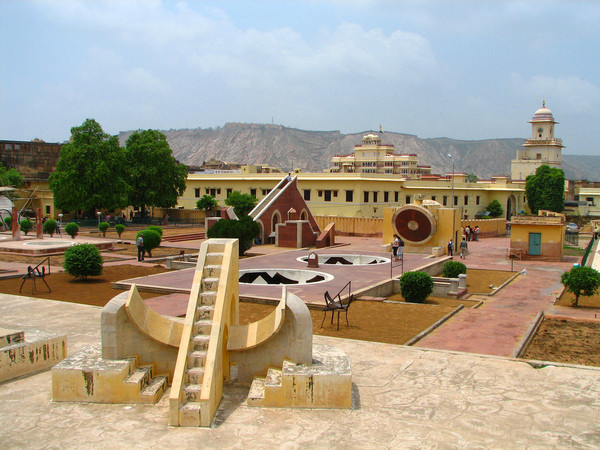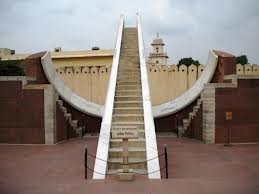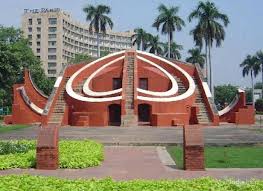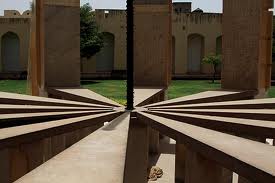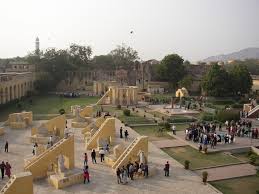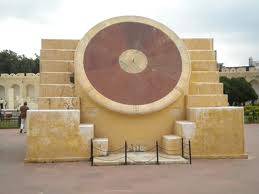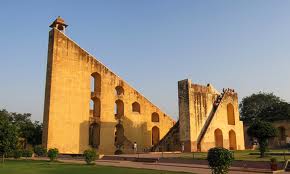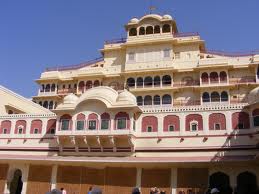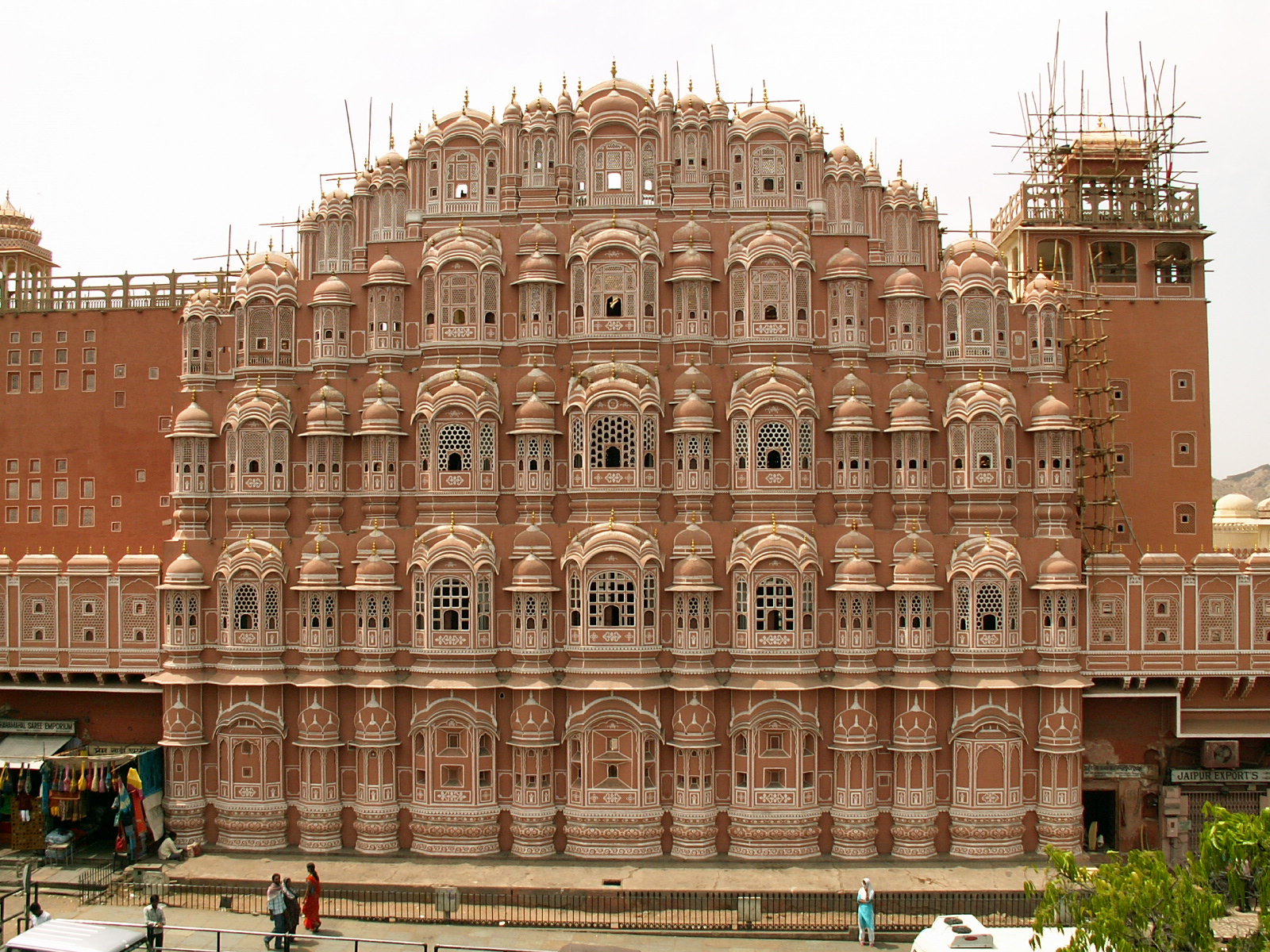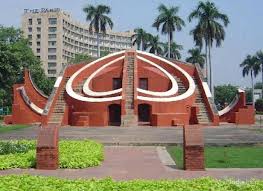India /Rajasthan /Jaipur /Jaipur
Sight Address : Jantar Mantar, near City Palace, Tripolia Bazar, Jaipur, Rajasthan 302002 Edit
Detail InformationEdit
The Jantar Mantar, Jaipur is a collection of architectural astronomical instruments, built by Maharaja Jai Singh II at his then new capital of Jaipur between 1727 and 1734. It is modelled after the one that he had built for him at the Mughal capital of Delhi. He had constructed a total of five such facilities at different locations, including the ones at Delhi and Jaipur. The Jaipur observatory is the largest and best preserved of these.
HistoryEdit
Jantar Mantar of Jaipur in Rajasthan is one of the five astronomical observatories built by Maharaja Jai Singh, the founder of Jaipur of Rajasthan and is located close to the gate of the famous City Palace of Jaipur of Rajasthan. Jantar Mantar of Jaipur in Rajasthan is the biggest stone observatory in the world, which is still in a running condition and stands witness to the wisdom of the former age. The Jantar Mantar at Jaipur of Rajasthan was conceived as a quest for discovering the mysteries of the Cosmos. It was built not only to verify astronomical observations made at Jaipur of Rajasthan, but also to stimulate interest in astronomy, which had become enmeshed in theory, superstition and religious jargon. During the period between 1727 and 1733, Jantar Mantar of Rajasthan took its form and structure. Maharaja Jai Singh II, the founder of the ‘pink city’, was a great scholar and an avid astrologer. He studied philosophy, astrology, architecture and religion in various schools, and was also well versed with universal mathematical concepts such as Euclid’s Clements, Ptolemy’s Syntaxes and the Master works of Aryabhatta. In the year 1718, he wanted to construct an observatory of renown. For this, he studied the subject of astronomy and then built five different observatories around North India. At these places, he would sit with other scholarly astronomers, such as Pt. Kedarnath, for astronomical observations. The ‘Jantar Mantar’ at Jaipur, being the biggest conservatory in the country, was renovated time and again and houses various instruments that offer precise measurements of time, the azimuth, declination of the sun and the positions of constellations, along with several other astronomical phenomena. The Jaipur observatory was functional for seven years only, as the Maharaja was not very successful in deriving accurate, astronomical observations.
Must SeeEdit
Must-see
Visiting TimeEdit
9.30 a.m. to 5 p.m
Closed OnEdit
N.A.
Best Season to VisitEdit
October to March
Best Time To VisitEdit
Morning , Afternoon
Time Required for SightseeingEdit
N.A.
Ticket Required : Yes Edit
Individual National Adult Rs. : Rs.40
Kids Rs. : Rs.20
Individual Foreigner Adult Rs. : Rs. 100
Kids Rs. : N.A.
Still Photo Camera Rs. : Rs. 20 for Indian and Rs. 50 for Foreigners
Video Camera Rs. : Rs.50
Guide Required : No Edit
Approximate cost: N.A.
Dress Code (If Any) : No Edit
Dress Require: N.A.
Restaurants NearbyAdd / Edit
- Supyar Mahal, Trattoria ; 20 Jaswant Nagar | Khatipura, Jaipur 302012, India, 2)9 Khandela House Sansar Chandra Rd ; Ph/M – 141 237 8009 ; Food Serve – N.A.
How to ReachEdit
Taxi : Jantar Mantar, Jaipur can be accessed by Taxi. Taxis run on meter, and charges will hover around Rs 12 per kilometer.
Bus: Jantar Mantar is well connected by motorable roads with major destinations of Jaipur city. Buses are easily available to Jantar Mantar from any major destinations of Jaipur.
Train : The nearest railway station to reach Jantar Mantar is Jaipur Railway Station, Shanti Nagar, Hasanpura, Jaipur, Rajasthan, India which is located at a middle of city. After getting down at the railway station, take an auto-rickshaw, bus or hire a taxi to reach the destination within the city.
Air : The airport is situated close to Sanganer, almost 13 km to the south of Jaipur City. Domestic airlines connect the city to Delhi, Mumbai, Kolkata, Ahmedabad, Agra, Jodhpur and Udaipur. The Jaipur airport also provides international flights to Dubai, London, Muscat and Sharjah. Taxis are available to and from airport. Air India, Indian Airlines, Jet Airways, etc. fly daily to Jaipur.
Others : Cycle rickshaws charge anywhere from Rs 10 to 30, but this mode of transport is very slow.
Things to CarryEdit
Carry Own Food and Water as there is no good restaurant.
Safety / WarningEdit
Summer – light tropical or cotton Winter – Woollens
1. Double-check all hotel and restaurant bills for errors.
2. Don’t leave cash and valuables in your hotel room. Use room safes where available.
3. Keep daily cash in separate pockets.
4. Don’t flash jewellery or large sums of money.
5. Never pay for anything upfront – including drivers.
6. Avoid touts.
HelplineEdit
Police 100
Fire 101
Ambulance 108
Child 1098
Directory Assistance 210
